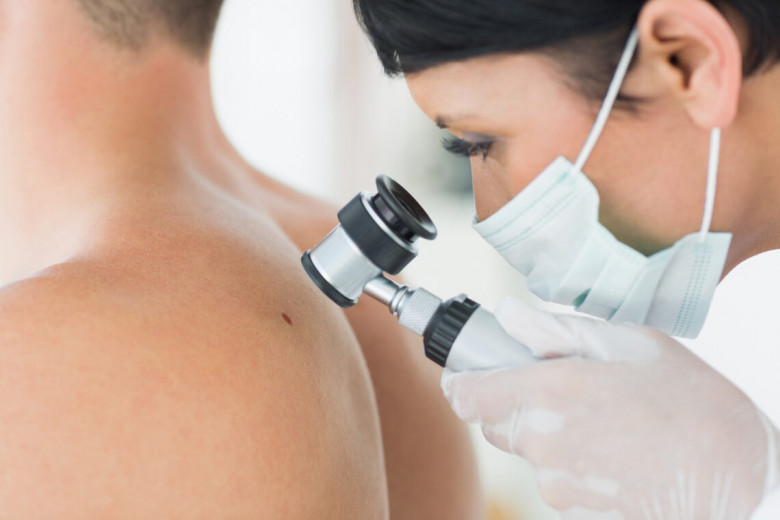views
When it comes to skin care, finding the right treatment is essential for maintaining healthy, vibrant skin. Whether you’re dealing with acne, aging signs, or other skin conditions, the Best Dermatologist in Dubai can offer expert guidance and treatment options that cater to your specific needs. Dermatologists use a range of therapies and procedures to address various skin issues, ensuring that your skin stays radiant and protected. In this article, we’ll explore the most common treatments dermatologists recommend to help you achieve your skincare goals.

1. Topical Treatments
Topical treatments are often the first line of defense against common skin concerns. These are creams, gels, or ointments that are directly applied to the skin. Dermatologists prescribe these treatments for conditions like acne, eczema, rosacea, and psoriasis.
For acne, topical medications such as retinoids and benzoyl peroxide are frequently used to clear blocked pores and reduce inflammation. If you have eczema or psoriasis, corticosteroid creams can help reduce skin irritation and inflammation, providing relief from discomfort.
2. Chemical Peels
Chemical peels are a popular dermatological procedure designed to rejuvenate the skin by removing the outermost layer of skin cells. This process stimulates collagen production and can address skin concerns like wrinkles, age spots, and acne scars. There are different types of chemical peels – mild, medium, and deep – with varying levels of intensity depending on the severity of your skin issues.
Mild peels often use alpha-hydroxy acids (AHAs), while stronger peels may involve trichloroacetic acid (TCA) or phenol. After the treatment, your skin will be smoother, clearer, and more even in tone, though some peeling and redness may occur temporarily.
3. Laser Treatments
Laser skin treatments are non-invasive options for addressing a wide range of skin concerns. Dermatologists use lasers to treat issues such as acne scars, hyperpigmentation, fine lines, and unwanted hair. Lasers work by using concentrated light energy to target specific layers of the skin, stimulating collagen production and improving texture.
The most common laser treatments include fractional CO2 lasers for skin resurfacing, as well as IPL (Intense Pulsed Light) for treating sunspots and redness. Laser treatments are highly effective but may require multiple sessions for the best results.
4. Microneedling
Microneedling, also known as collagen induction therapy, involves the use of tiny needles to create micro-injuries on the skin’s surface. This process stimulates the skin’s natural healing response, promoting the production of collagen and elastin. Microneedling is particularly effective for reducing the appearance of acne scars, fine lines, and stretch marks.
While the procedure may sound intimidating, it's relatively quick and minimally invasive, with most patients experiencing only mild redness or irritation afterward. Results are visible after several sessions, with skin becoming firmer, smoother, and more youthful.
5. Botox and Dermal Fillers
Botox and dermal fillers are two of the most common cosmetic dermatological treatments used to combat the effects of aging. Botox temporarily relaxes the muscles beneath the skin, reducing the appearance of fine lines and wrinkles, especially around the eyes, forehead, and mouth.
Dermal fillers, on the other hand, are injectable treatments used to restore volume and smooth out deeper wrinkles. They are often used to plump the lips, lift sagging cheeks, and fill in deep nasolabial folds. Both Botox and fillers offer quick results with minimal downtime, making them popular choices for individuals seeking non-surgical solutions for skin rejuvenation.
6. Cryotherapy
Cryotherapy involves the application of extremely cold temperatures to the skin to treat a variety of skin conditions, including warts, skin tags, and precancerous growths. During the treatment, liquid nitrogen is used to freeze the abnormal tissue, causing it to slough off over time.
This method is highly effective for treating certain types of skin lesions and growths and is usually a quick procedure that requires little to no recovery time. While cryotherapy is generally safe, it may cause temporary redness, swelling, or blistering in the treated area.
7. Platelet-Rich Plasma (PRP) Therapy
Platelet-rich plasma (PRP) therapy is a treatment that utilizes your own blood’s platelets to promote healing and rejuvenation. After a small amount of blood is drawn, it’s processed to concentrate the platelets, which are then injected into targeted areas of the skin. PRP therapy is often used for treating hair loss, acne scars, and signs of aging.
The growth factors in the platelets stimulate cell turnover and collagen production, leading to improved skin texture, tone, and elasticity. PRP therapy is particularly sought after for its natural approach to skin rejuvenation, as it uses the body's own healing properties.

8. Sun Protection and Skin Cancer Screening
Preventative care is a critical component of dermatology. Dermatologists emphasize the importance of sun protection to reduce the risk of skin cancer and prevent premature aging. Broad-spectrum sunscreen, regular skin checks, and educating patients on proper sun safety are essential aspects of dermatological care.
If you notice any suspicious moles or skin changes, dermatologists can perform skin cancer screenings and biopsy procedures to detect and treat any potential issues early. Early detection is key to effective treatment, making these screenings a crucial part of maintaining skin health.
Conclusion
Dermatologist Dubai offer a wide range of treatments to address various skin concerns, from acne to aging. Whether you're looking for a non-invasive treatment like Botox or a more comprehensive approach like chemical peels or laser therapy, there are options available to suit your skin’s unique needs. Consulting with the best dermatologist in Dubai ensures that you receive personalized care and effective treatments tailored to achieve optimal results. With the right treatment plan, you can maintain healthy, youthful-looking skin that radiates confidence.






















Comments
0 comment